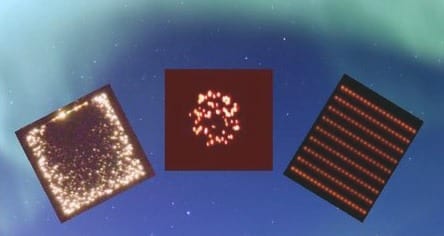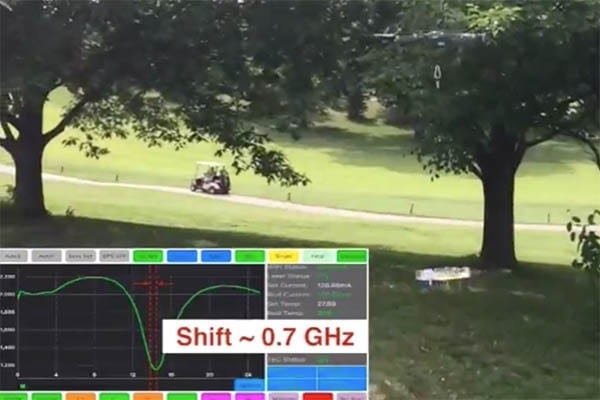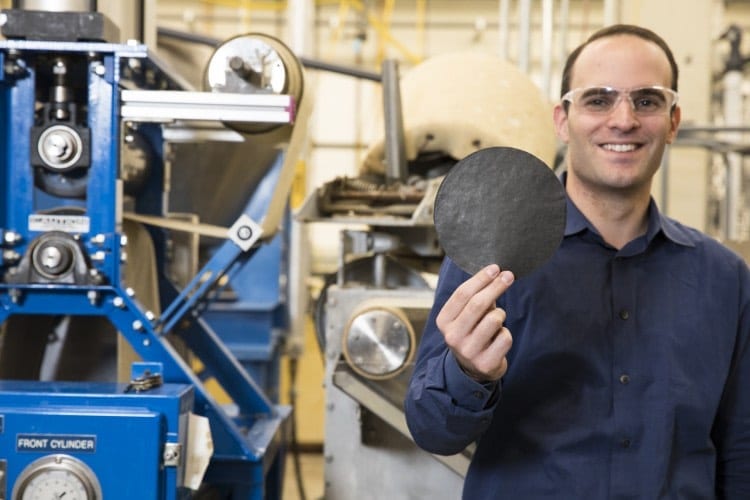
Electronics and light don’t go well together on a standard ‘CMOS’ chip. Researcher Satadal Dutta of the University of Twente succeeded in introducing a light connection into the heart of a semiconductor chip. In this way, two circuits can communicate. Or: the worlds of electronics and photonics are connected.
What is particularly attractive about Dutta’s solution is that no special materials or manufacturing processes are needed: the light comes from silicon. The light source, detector and the light channel can be made using the technology that is used to make the electronic circuits. Fully optical circuits are available nowadays, but they use materials like indium phosphide and gallium arsenide, which can’t easily be combined with the CMOS chip processes used for semiconductor chips you’ll find in today’s smartphones, for example.
Avalanche LED
The alternative would be: make a LED out of silicon. And that’s the problem: silicon only emits a tiny amount of infrared light, while a detector made out of silicon needs visible light. They are talking and listening at different wavelengths. Dutta therefore chooses a remarkable way out: connect the LED reverse. At low voltages, there’s no current, but at a voltage that is high enough, there will be a small current that amplifies itself like an avalanche. In this ‘avalanche mode’, the LED will transmit visible light. Using the same process, the light detector, as well as the light channel in-between can be made. Thanks to the special comb structure that Dutta designed, the light source gets more uniform and energy efficient.
Isolation
An optical link on a chip is a good way to ‘galvanically’ isolate two circuits from each other. This is often necessary in cases where one circuit is a low-voltage and low-current one, while the other is a high-power circuit. They should be connected, but not by conducting wires, for reasons of safety. A classic transformer is an option then, but an optical connection is often used as well. Until now, this is a separate ‘optocoupler’, which is large and has a limited bit rate. Dutta’s new solution is much more compact as an alternative: it total, it is just a few tens of microns and it offers the protection that’s needed. Compared to optical channels in full-optical circuits, the energy consumption is relatively high, as there is quite some scattering of light. On the other hand: designing the electronics around the optical link in an efficient way, the amount of light needed for a successful connection, can be kept to a minimum.
Connecting worlds
All-optical circuits may become the ‘new electronics’, predictions say. In the transition from electronic to optic circuits, hybrid circuits, like the one Dutta designed, could play an important role.
Learn more: When electronics and photonics meet on a standard chip
The Latest on: Electronics and photonics
[google_news title=”” keyword=”electronics and photonics” num_posts=”10″ blurb_length=”0″ show_thumb=”left”]- POET Announces Closing of Private Placement Financing for CAD$10 Millionon May 10, 2024 at 7:53 am
NOT FOR DISTRIBUTION TO U.S. NEWS WIRE SERVICES OR FOR DISSEMINATION IN THE UNITED STATESTORONTO, May 10, 2024 (GLOBE NEWSWIRE) -- POET ...
- MKS Instruments, Inc. (NASDAQ:MKSI) Q1 2024 Earnings Call Transcripton May 10, 2024 at 7:35 am
May 9, 2024 MKS Instruments, Inc. isn't one of the 30 most popular stocks among hedge funds at the end of the third quarter (see the details here). Operator: Welcome to the MKS Instruments' First ...
- GF's approach to AI: silicon photonics and power semiconductorson May 9, 2024 at 4:59 pm
Compared to TSMC, Samsung Electronics, and even Intel Foundry, which have moved into sub-7nm advanced processes, GlobalFoundries (GF), which announced in August 2018 that it would indefinitely shelve ...
- Harnessing Sunlight Like Never Before: Hemispherical Solar Cells Unleash Unmatched Absorptionon May 9, 2024 at 4:17 am
New research suggests redesigning organic solar cells with a hemispherical shell structure to provide broader angular coverage, which is particularly beneficial for devices that need adaptable light ...
- Cautious Coherent sees OLED display tractionon May 8, 2024 at 5:09 am
Combined with hefty debt and interest payments for loans used to finance the merger of II-VI and the original Coherent lasers business two years ago, that drop in sales resulted in a net loss of $13.2 ...
- Center for Photonics, Electromagnetics and Nanoelectronics (CPEN)on March 19, 2024 at 5:00 pm
The Center for Photonics, Electromagnetics and Nanoelectronics (CPEN) is to conduct innovative research in novel electromagnetic materials (metamaterials), optoelectronic devices, biosensors, antennas ...
- Towards fabless silicon photonicson February 19, 2024 at 8:43 am
Luxtera, one of the world leaders in silicon photonics, has recently released the first commercial products that have electronics and photonics integrated on the same chip 9. Intel, the world's ...
- Ambient Photonics to Demo Light Powered Electronics at CESon January 7, 2024 at 5:22 pm
Ambient Photonics, a company that has been developing low-light solar cell technology for use in a variety of electronic devices, is set to present its products at the Consumer Electronics Show ...
- Challenges In Photonics Testingon April 10, 2023 at 4:59 pm
“For photonics, testing means being able to couple and get information about light on the chip,” said Gilles Lamant, distinguished engineer at Cadence. “It’s not like just having a landing pad on the ...
- Research Centerson May 19, 2022 at 7:54 am
The Semiconductor Photonics and Electronics Group (Jing Zhang, CfD) The Semiconductor Photonics and Electronics Group focuses on developing highly efficient III-V and III-Nitride semiconductors for ...
via Google News and Bing News










